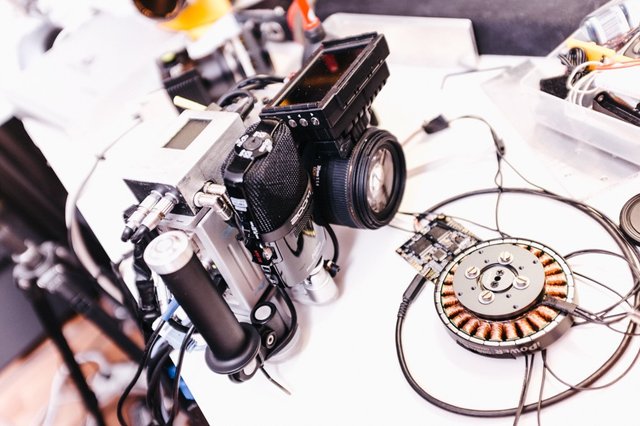
Magyar began experimenting with scanning in 2003. “I wanted to get out of conventional photography,” he told me. “I remember I didn’t sleep too much. I was up whole nights, thinking about how to do it.” In an early experiment, Magyar built his own primitive scanner, using an East German slide projector that cast a narrow light beam. Then he constructed a platform out of a stack of Lego bricks that permitted the beam to “scan” across a subject by slowly tilting from top to bottom. A standard reflex camera captured all of the scanned lines in a single shot, re-assembling them into one image during a minute-long exposure. In effect, the scanner was slicing a minute of time into thin sections, and the camera was stacking the slices back together, creating a single image composed of all those moments. Magyar took to scanning himself, experimenting with different physical movements that created distorted final images. “When you turned around, the image that came out showed your body as a corkscrew,” he says. “It was an interesting technological experiment, but that was it. I put it away for years.”
He remained fascinated, however, by the notion of capturing different parts of a person or of people at different times, constructing a still image out of “little pieces,” he says. This matched his growing interest in what he calls “the ever-changing nature of the present,” the constant flow of life that defied easy visual representation.
In 2006, during a months-long stay in Shanghai, he had an epiphany. “I had this feeling that I would, like, scan the flow of people. I began looking for the right kind of spaces where I could find a monotonous flow.” Magyar first studied escalators in Shanghai shopping malls. Then his gaze shifted to city streets—particularly major intersections or bus stops with a continuous procession of humanity. Once he had the concept in his head, he set about to develop the technology to realize it. “It was continuous research,” he says. “It took me a few weeks to figure it out.”
The answer, Magyar realized, was a modified version of the “slit scan” camera, the type used to determine photo finishes at racetracks and at Olympic sporting events by capturing a time sequence in one image. Such cameras were rare and cost many thousands of dollars, so Magyar set out to build one himself. He joined a medium-format camera lens to another sensor and wrote his own software for the new device. Total cost: $50. He inverted the traditional scanning method, where the sensor moves across a stationary object. This time, the sensor would remain still while the scanned objects were in motion, being photographed one consecutive pixel-wide strip at a time. (This is the basic principle of the photo-finish camera.) Magyar mounted the device on a tripod in a busy Shanghai neighborhood and scanned pedestrians as they passed in front of the sensor. He then digitally combined over 100,000 sequential strips into high-resolution photographs.
Hi! I am a robot. I just upvoted you! I found similar content that readers might be interested in:
https://medium.com/matter/einsteins-camera-88aa8a185898
Downvoting a post can decrease pending rewards and make it less visible. Common reasons:
Submit